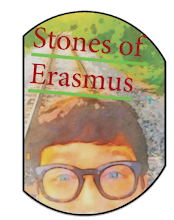I think people carry with them certain memories—especially from early childhood into adolescence—that surface later in adult life, unbidden and strangely intact. Not the big moments. Not the milestones. But the people who were simply there.
 |
| I definitely had a coloring book like this when I was a kid in the 80s! |
Every morning and afternoon, I got on the bus driven by a man named Mr. Barry.
That is the memory.
Mr. Barry was a quiet man, probably in his forties—or at least that’s how I remember him. He was dark brown, with a face worn gently by time, gray-black hair thinning at the crown. He didn’t say much. I don’t remember conversations. I don’t remember jokes or discipline or instruction. What I remember is his presence.
On cold days, I can see him sitting in the driver’s seat before we boarded, eating out of a lunch container—not a tin exactly, but a proper lunch box. Inside was red beans and rice. In Louisiana, that meal is more than food; it’s ritual, warmth, care. I somehow knew his wife—or someone who loved him—had made it. He ate it slowly, with relish, like it mattered.
I don’t even know when he ate it. Maybe between routes. Maybe in the afternoon before the ride home. Memory doesn’t care much for logistics. It keeps what it wants.
Mr. Barry wore jeans, usually a collared shirt with a T-shirt underneath—sometimes red-and-black checked. Once the bus got moving, he’d turn on the radio. Rock and roll, whatever was on FM at the time. Occasionally, in the mornings, the news. There were only so many stations then. The world arrived filtered and faint.
Here’s the strange part: I don’t remember how he drove. I don’t remember a single thing about his skill behind the wheel. I don’t remember rules or reprimands or even the sound of his voice. But I remember him. His face. His name. The constancy of seeing him every day.
He probably didn’t know my name.
And yet, decades later, I carry him.
In high school, I had another bus driver: Mr. Greg. He was different—more talkative, lanky, tall, with a mustache and an easy smile. He played country music. He was also a police officer in Madisonville, Louisiana, where I lived at the time. I knew more about him. I saw him occasionally outside the bus, sometimes in his patrol car. He had a brother who also drove a bus, though I can’t remember his name.
Mr. Greg had rules—bus drivers always do. Sit down. Don’t move. Don’t test the limits of a vehicle that is both transportation and controlled chaos. Bus driving is hard. You’re responsible for dozens of children while piloting something the size of a small building. You’re caretaker and authority and witness, all at once.
I don’t know where either of these men are now. Mr. Barry could be in his sixties, his nineties, or gone altogether. Mr. Greg is probably in his fifties or sixties. Time gets slippery when you start measuring it against your own life. I’m now roughly the age I once imagined Mr. Barry to be. Or maybe older. Or maybe not.
And that’s the point.
We spend so much time worrying about what will matter—what we’ll be remembered for, what impact we’re making, whether our actions register. But memory doesn’t work that way. People remember presence. Consistency. Care. The way someone showed up, quietly, day after day.
Mr. Barry and Mr. Greg probably have no idea they live in my mind. They weren’t teachers. They weren’t family. They weren’t friends. They were simply the men who took me from home to school and back again, safely, repeatedly, without drama.
And yet they carry a kind of solace for me now—a reminder of a time when I had less agency, less freedom, and other people quite literally carried me where I needed to go.
I know for certain I could never be a bus driver. That job requires patience, endurance, and a tolerance for chaos I do not possess.
So this is a quiet thank-you—to Mr. Barry, to Mr. Greg, and to all the people whose labor is invisible but essential. To the ones who never make speeches but leave an imprint anyway.
You never really know who will remember you.
And maybe that’s the grace of it.


.png)